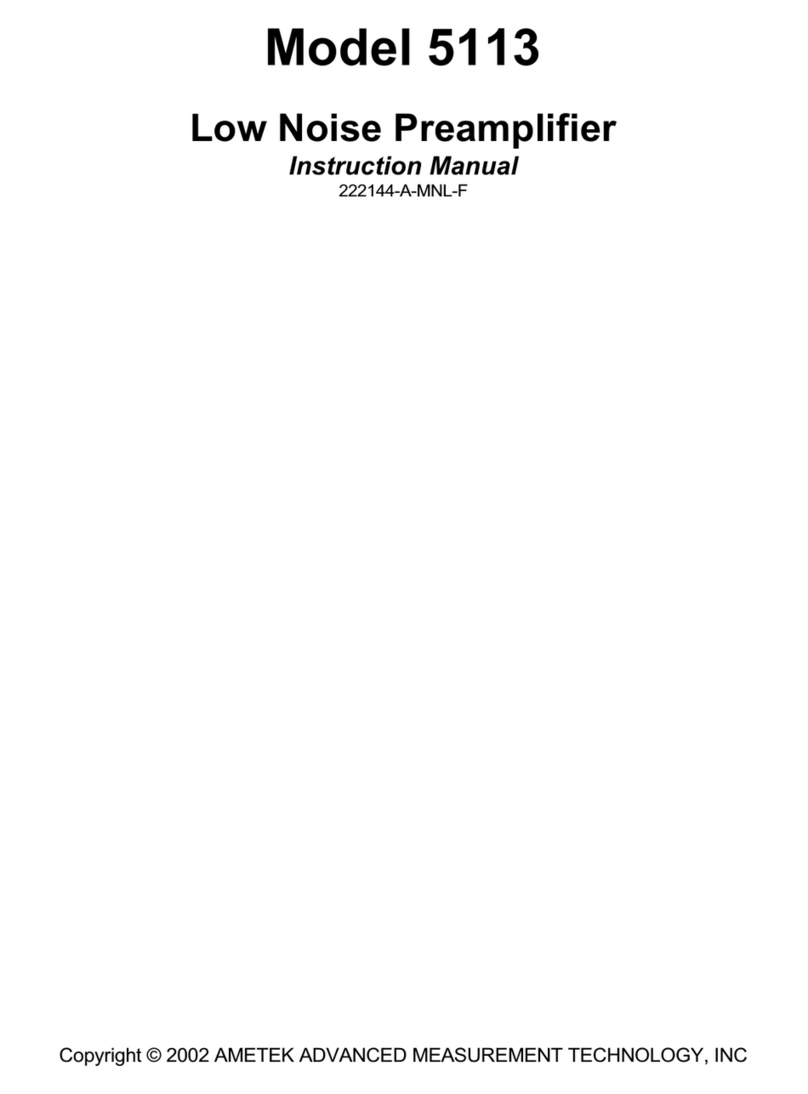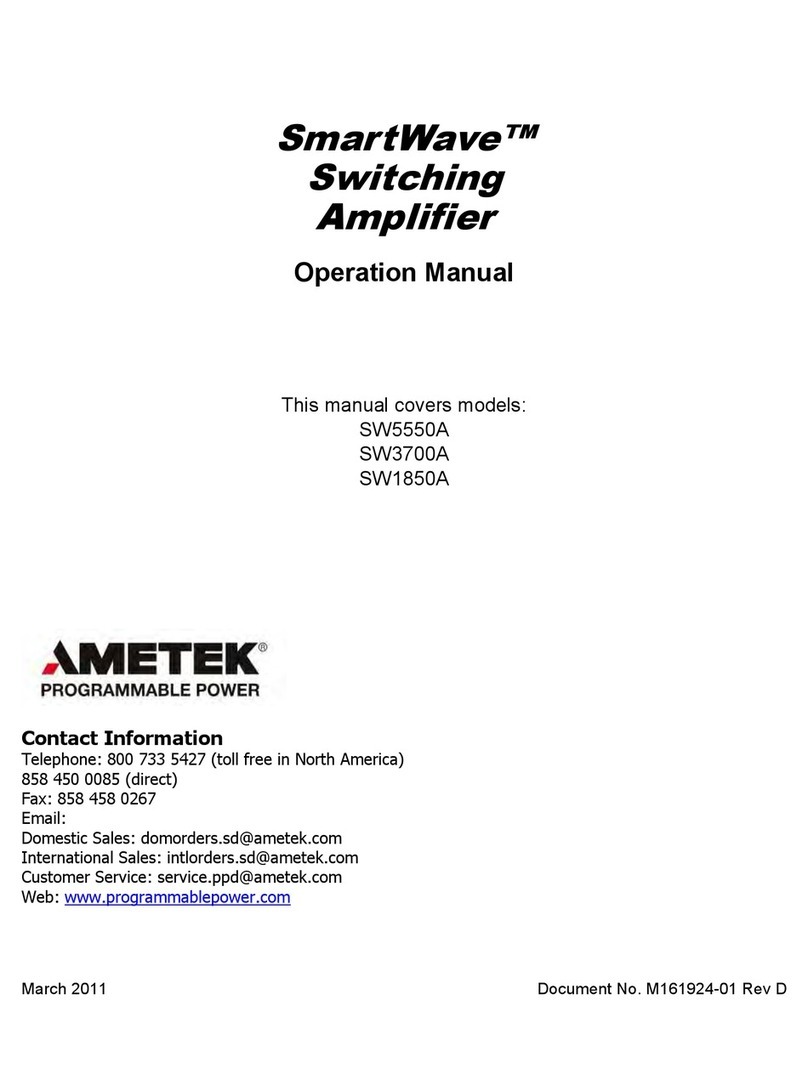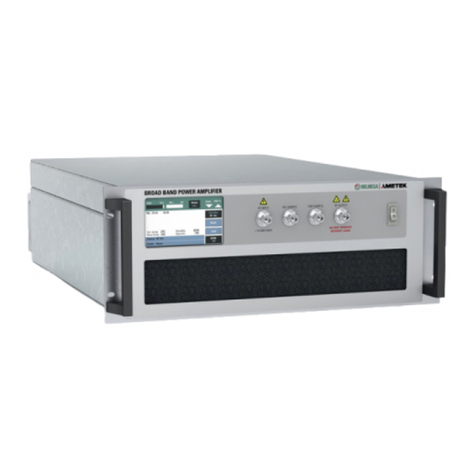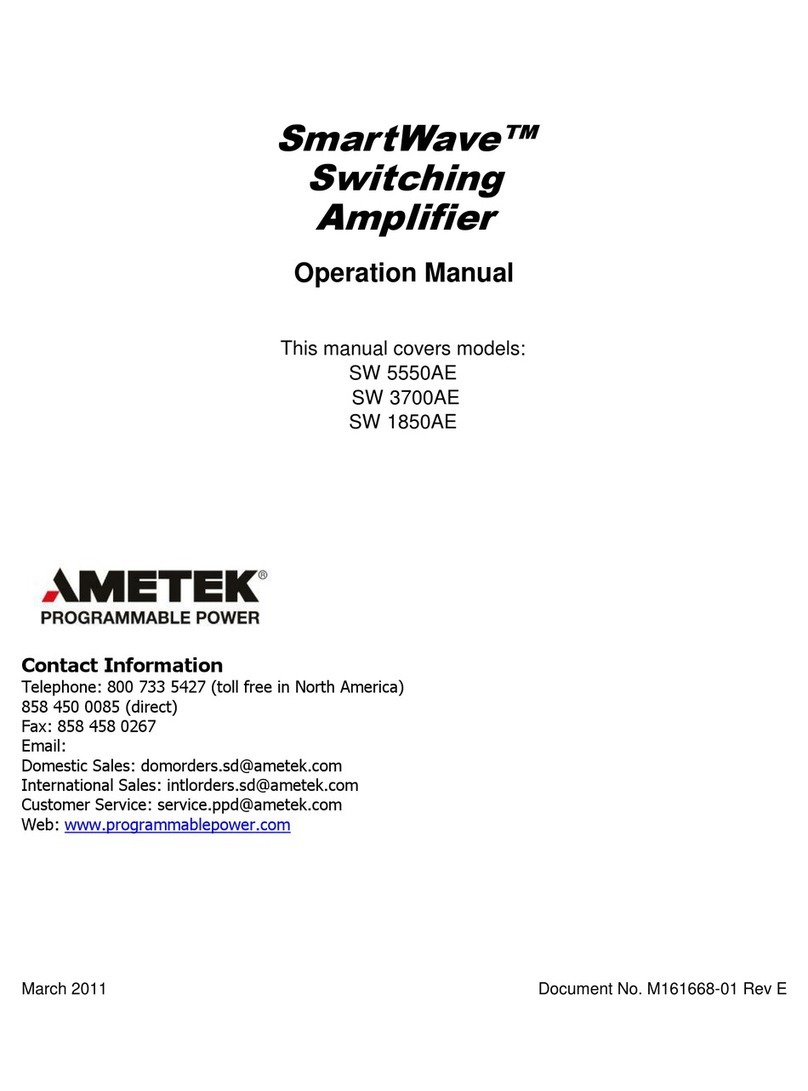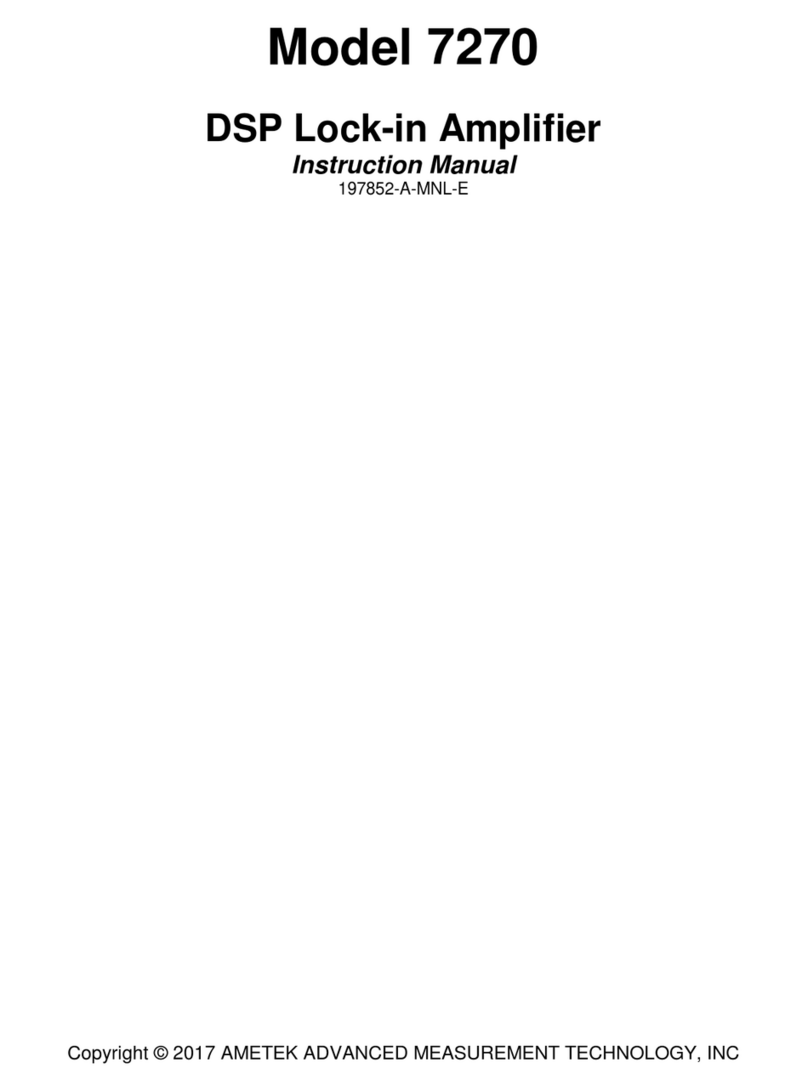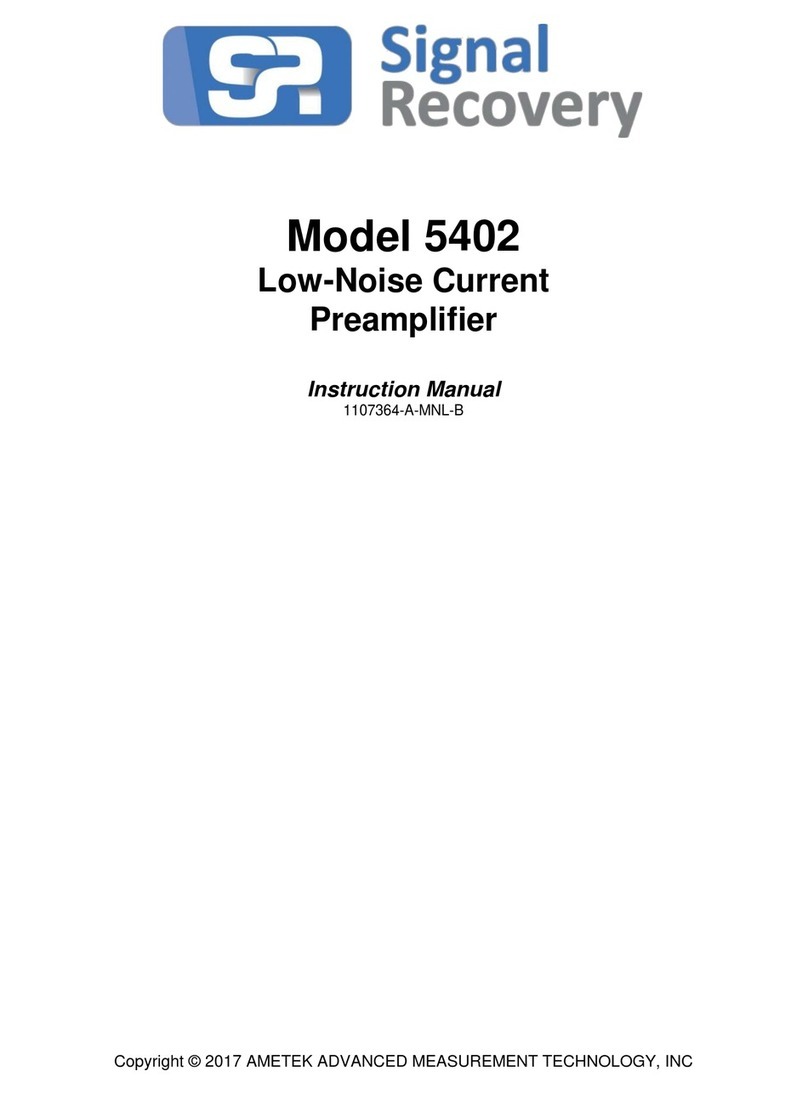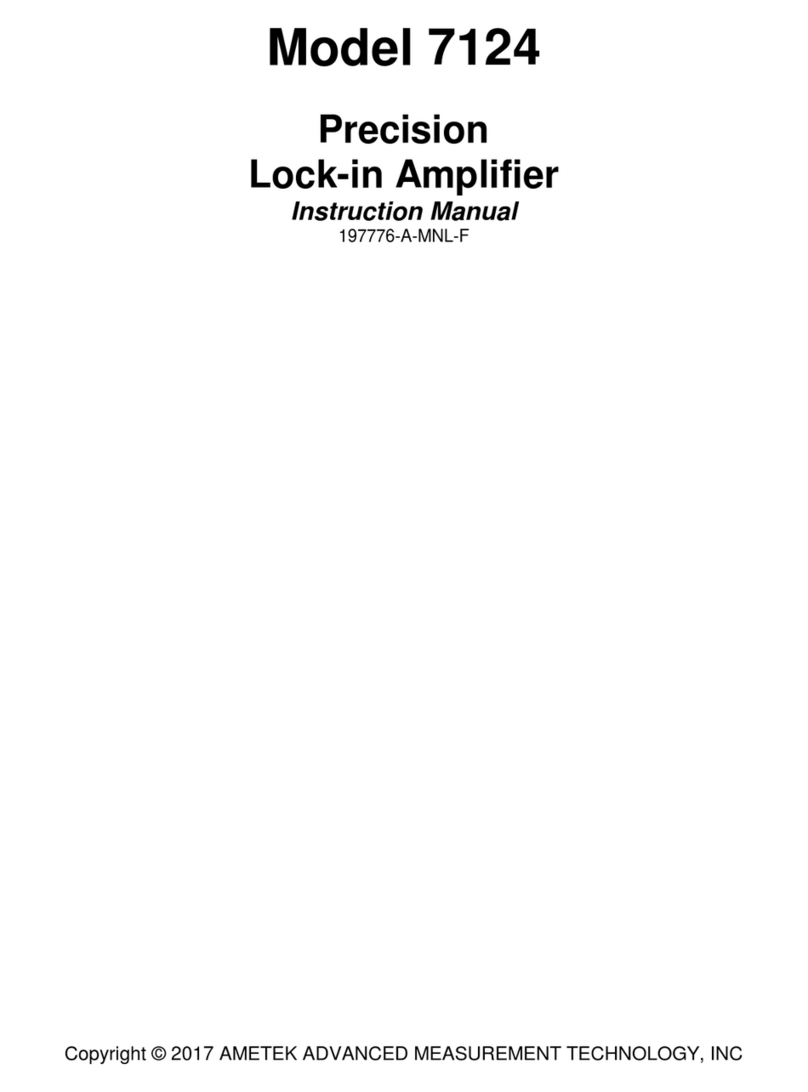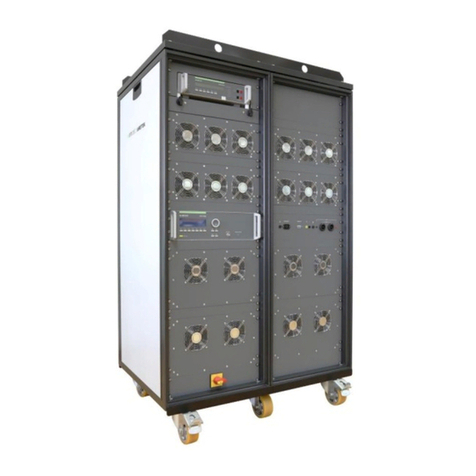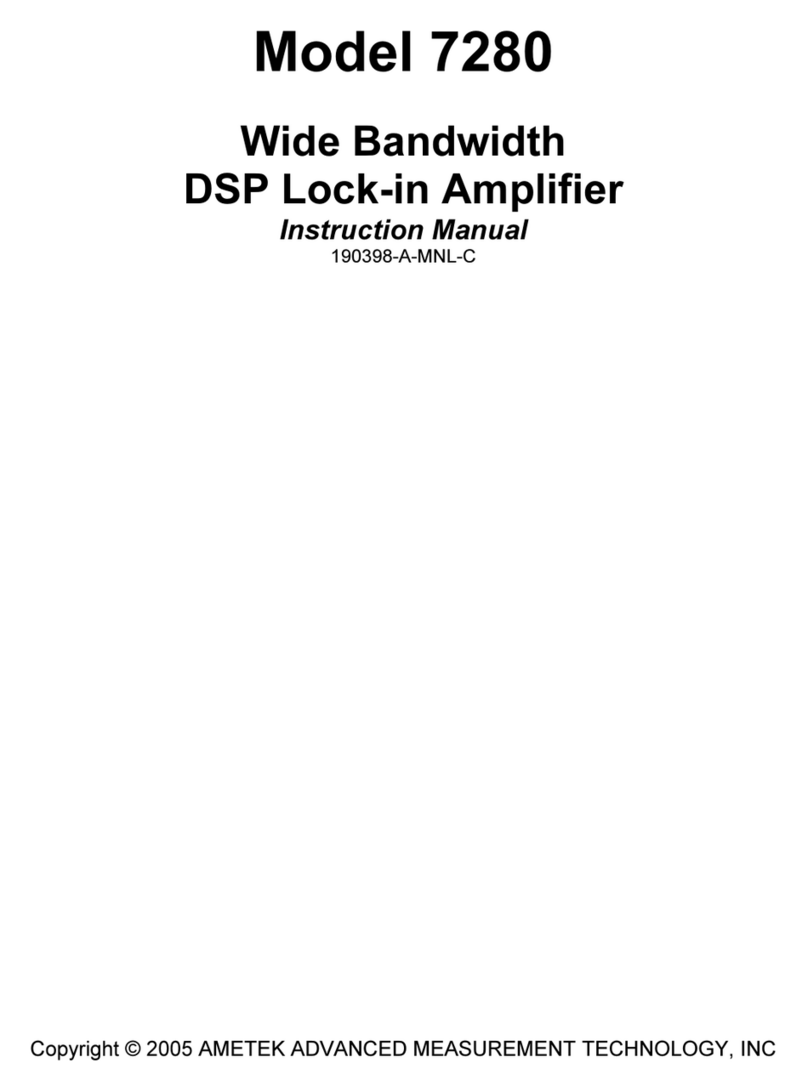
AMETEK CTS TWT Amplifiers
Quick Start and Safety Guide V 1.0 7 / 10
2. Installation
2.1 General
CAUTION!Exercise care when lifting.
Amplifier models that are very heavy have a caution label on the top cover. Appropriate lifting practices should
be observed during transportation, installation, or removal of the amplifier from its mounting position. When
mounted in a rack, the amplifier must not be supported by the front panel fixing holes alone. For easier instal-
lation and removal, we recommend that the amplifier is positioned with its top no more than 1.4 metres above
ground level.
CAUTION: Do not support the whole weight of the amplifier with the front panel handles.
These should only be used for sliding the amplifier in and out on the rack.
♦Note: The amplifier may be lifted using the rear protection handles.
The amplifier is designed to be mounted in a 19” fixed rack installation. When mounted in a rack, use a support
tray-slider-assembly or rack sliders, especially for heavy amplifier models.
CAUTION:Do not obstruct the airflow through the amplifier.
At least 200mm clearance should be allowed behind the amplifier, so that air flow and connecting cables are not
obstructed. An unobstructed area of at least 200mm should be allowed in front of the amplifier front panel air-
intakes.
CAUTION: Even though the ambient air temperature may be within the amplifier’s specification, the
internal temperature may rise above operational limits if it is operated in direct sunlight.
The cooling airflow is drawn in through the front and exhausted at the rear. If this airflow is obstructed, overheat-
ing of the amplifier may occur. For correct amplifier operation, airflow through the unit must be maintained.
2.2 Connecting the line cord.
CAUTION:It is essential that the amplifier operates from a line source that does not apply voltages
and frequencies between the line conductors (or between either line conductor and ground) that are
outside the range detailed in the specification sheet.
CAUTION:Ensure that the line cord does not interfere with the operation of the rear panel line-input
circuit breaker(s).
2.3 Connecting the chassis to a suitable ground connection.
To improve EMC immunity, bond the amplifier to a good ground with a conductor of 4 sq.mm or the
equivalent earth braid, a ground post being provided for this purpose on the rear panel. Although it
provides an extra measure of safety, this is NOT a protective earth connection. The protective earth
is the ground pin on the line supply connector(s).
2.4 Connecting the RF cables
CAUTION: Ensure that the RF source is in, “RF OFF” mode when making connections.
CAUTION: Ensure any cables and connectors mating with the RF input and RF output connectors
are of 50-ohm impedance and are designed to handle the power at the frequencies generated by
the amplifier. Although very similar, 75-ohm connectors must not be used.
